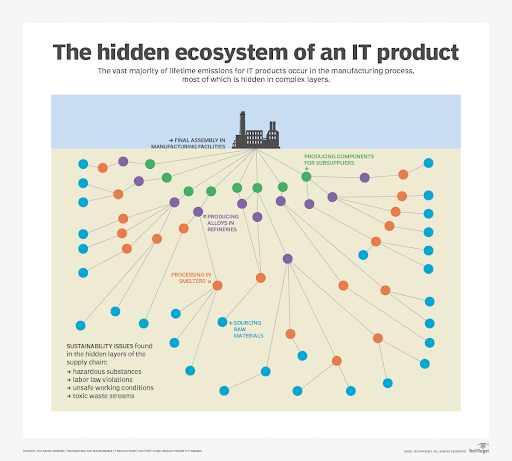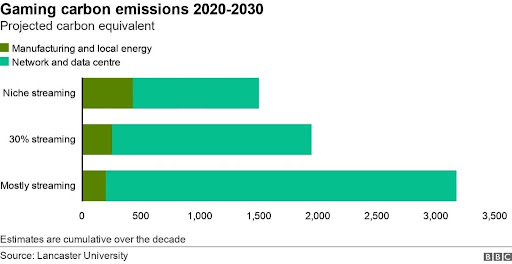4 Ways Sustainability Has Transformed the Tech World
The tech world is constantly evolving. As we see AI enter the workplace and automation take over the supply chain industry, it won’t be long before our lives a digitally transformed.
The question is, what’s next? As the tech industry releases more innovative everyday solutions, sustainability has become a focal point for developers and designers in 2023.
“Sustainable technology is increasingly important operationally — for optimizing costs, energy performance, and asset utilization, for instance — but it also drives ESG outcomes like improving wellness and providing the traceability needed to ensure responsible business practices,” says Autumn Stanish, Gartner’s Principal Analyst. “Sustainable technology also facilitates new business models and tech-enabled products to better serve customers.”
Investing in sustainable tech has become the newest trend amongst some of the globe’s top CEOs, with 74% of business leaders claiming that using greener technologies attracts possible investors.
From the healthcare and education sector to the manufacturing and gaming sector, there are now more green tech solutions available than ever before. Stick with us as we reveal how sustainability has driven a future of low-emission technology and ask whether technology could be the answer to an eco-friendly tomorrow.
Cleantech
One of the most obvious impacts of sustainability on the tech industry is the introduction of cleantech.
Defined by Investopedia, “the term cleantech—short for clean technology—is used to refer to various companies and technologies that aim to improve environmental sustainability. Usage of the term has varied over the years, with some users treating it synonymously with terms such as “green technology” to refer to renewable energy sources, new methods of recycling, and other environmentally-friendly practices.”
The cleantech sector is growing at an exponential rate, especially on the back of COP26’s goal to reach a global net zero by 2050.
There are plenty of tech giants pioneering the way forward too. Green developers like Arrival, who aim to create an eco-friendly transport eco-system, have just received £318 million in funding, while Tokamak’s clean energy technology received £69 million in its latest funding round.
“These new, young, rising star companies with high-impact solutions are poised to help combat the climate crisis,” says Richard Youngman, CEO of the Cleantech Group. “These solutions should be inspiring our corporate and political leaders to ramp up their actions and close the wide gap between their net zero words and the actions needed to stimulate stronger demand for such innovation.”
Green computing
Green computing has also become popular in the tech world. Also known as Green IT, “Green computing (also known as green IT or sustainable IT) is the design, manufacture, use, and disposal of computers, chips, other technology components, and peripherals in a way that limits the harmful impact on the environment, including reducing carbon emissions and the energy consumed by manufacturers, data centers and end-users.”
Currently, the IT industry is responsible for 3.9% of global emissions, so it’s no wonder that new initiatives are taking off, especially in the corporate sector!

(Image Source: Tech Target)
As you can see here, there are many hidden sustainability costs associated with running software for lengthy amounts of time. Introducing automation, energy-efficient power-downs, and strategic scheduling could reduce the tech industry’s carbon footprint significantly.
Some of the most recent green computing developments include the introduction of remote work, which reduces travel costs and office-based energy, alongside other innovations such as smart tech and AI, that automatically powers off computers and collected data quickly to reduce human interaction with technology.
Supply chain automation
Supply chain automation has also been a focal point for sustainable tech developers. As the e-commerce industry booms, supply demands have risen significantly.
In order to maintain order efficiency while still contributing to a net zero future, many suppliers and manufacturers are investing in AI-powered automation and robotics to speed up workflow, reduce energy costs and take the pressure off of manual laborers.
A whopping 80% of a business’s carbon emissions come from the supply chain process, so it’s no wonder that business leaders are feeling more pressure than ever to decarbonize their logistics process.
“Many warehouse automation systems help businesses save significantly on energy bills, while also avoiding unnecessary carbon emissions,” warehouse automation specialist Gavin Harrison says. “For example, auto-store robots use rechargeable batteries and self-generate much of the energy they require.”
The manufacturing industry could see a completely automated future. If businesses want to keep meeting net zero targets, technology will be utilized to reduce the energy costs of traditional laboring.
“Robotics, automation, and eventually drones will be the new norm for supply chain fulfillment capabilities,” Harrison says. “Automation and robotics will be an absolute necessity to reduce cost–to–serve, and to cut inefficiencies and optimize processes.”
Green Gaming
One area of tech that is often forgotten about in the sustainable debate is the gaming sector. Responsible for up to 3.7% of all greenhouse gas emissions, gaming has become a new point of focus for sustainable tech developers since 2020.

(Image Source: BBC)
Tech in the gaming industry is ever-evolving. From light and comfortable wearables such as AR-infused eyeglasses to new consoles and increased data bandwidth, these immersive tech releases are only adding to gaming’s growing carbon footprint.
In order to tackle this, the tech industry has introduced a number of new initiatives to encourage greener gaming in 2023.
Studios such as Space Ape are already aiming to go carbon neutral with their introduction to cleaner tech, automation, and even a shuttle bus-to-work scheme. Better still, gamers can even get involved with non-profit schemes such as ‘playing for the planet’ that offset carbon emissions from the industry by planting trees.
What’s next?
As the tech industry evolves, sustainability will be at the forefront of the future. The question is, just how many sectors will clean tech affect, and could green computing become a new goal for business leaders to strive towards?









